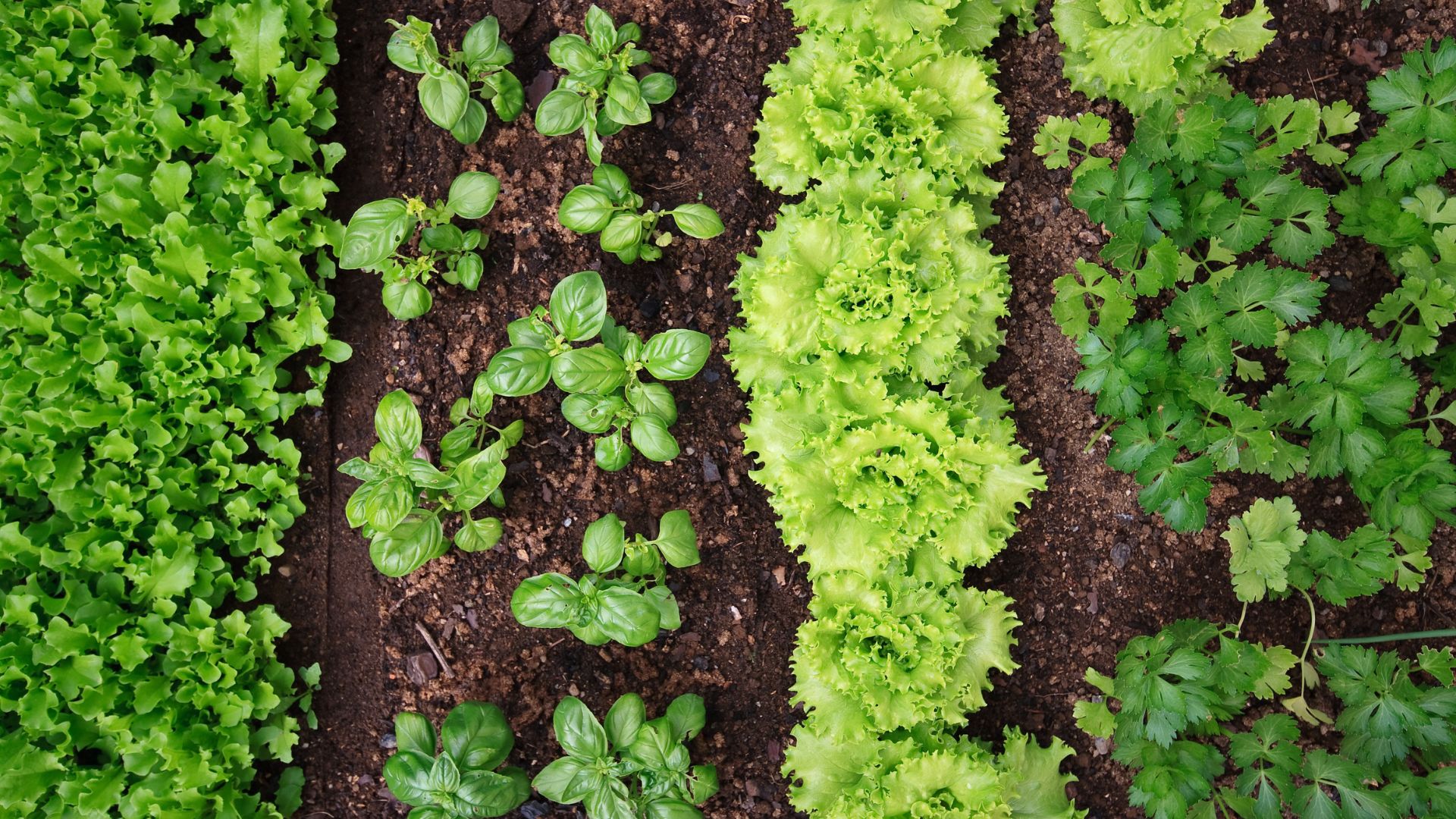
Vegetable companion planting is a great way to introduce a healthy and plentiful harvest. In doing so, you're welcoming new life into your backyard — it makes way for beneficial insects and gets rid of those pesky pests and unwanted disease. Your crops will certainty be fresh and free if they've been planted in the right pairing.
Companion planting is a natural way of welcoming a prosperous, well groomed and bloomed garden. Amy Enfield, Senior Horticulturist at ScottsMiracle-Gro tells us: 'Think of your garden as a community of plants working together and supporting each other for a common goal — a bountiful harvest. When the right plants are paired together in the garden, we can naturally reduce pest problems, improve soil nutrition, reduce weeds, boost plant yields and overall health, and maybe even improve flavor of certain vegetables'.
So, which vegetables do grow well together? Here's what you need to know — according to an expert.
Which Vegetables Make Good Companion Plants?

Companion planting in your vegetable garden will certainly give you a healthy and happy harvest season. There are many added benefits to pairing the right vegetables together, including preventing plant disease, keeping weeds out, preventing erosion, saving space and last but not least — attracting pollinators and beneficial garden insects.
Here are 10 vegetables that should be planted together, along with a little information advice on which vegetables not to plant together with your companion pairings.
1. Pole Beans, sweetcorn & Squash
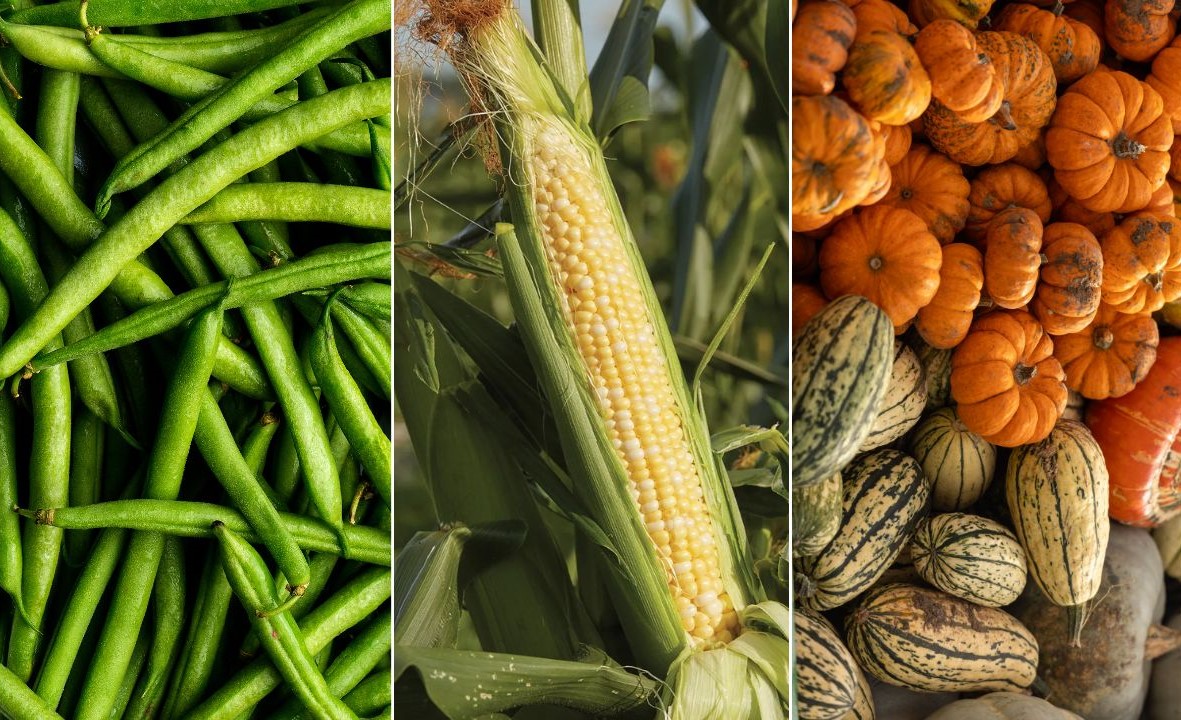
Pole beans are known to be one of the best vertical growing vegetables, but when planted with sweet corn and squash — this vegetable is an undeniable tasty treat as well as a visual delight.
'Not a pair but a trio, this grouping of plants is known as the Three Sisters planting method,' says Amy Enfield, Senior Horticulturist at ScottsMiracle-Gro. 'The sweet corn provides support for the pole beans to grow up. The pole beans provide nitrogen which benefits both the squash and the corn. The squash — whether zucchini, butternut, acorn, or even pumpkin — acts as a living mulch, shades the soil which minimizes weeds and helps the soil retain moisture'.
What not to plant with pole beans: Garlic
Soil type for pole beans: Well-drained, loose
Sunlight for pole beans: Full sun for 6-8 hours
Price: $2.46
Quantity: 1 pack
2. Tomato & Basil
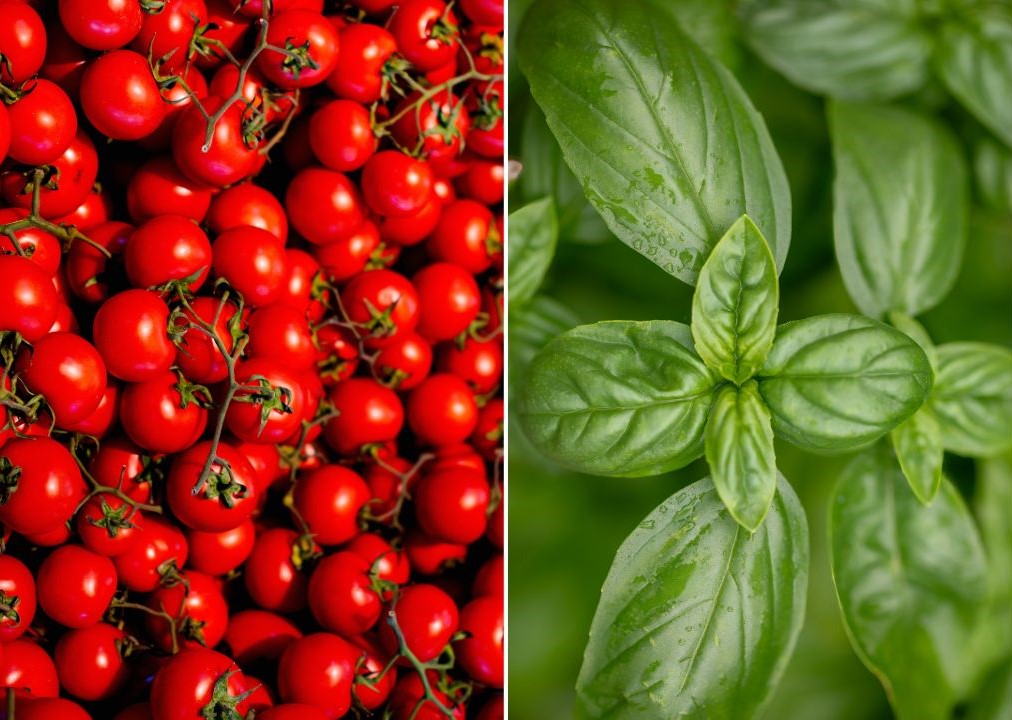
The best companion plant for tomatoes seems to be fragrant basil, according to the expert.
Amy tells us these two vegetables 'not only pair well together in the kitchen, but also in the garden'. She says the strong scent of the basil helps repel insects and pests such as thrips and tomato hornworm moths from eating away at the precious tomatoes.
'Some people even believe that planting basil next to tomatoes helps enhance the flavor of the tomatoes,' Amy adds.
What not to plant with tomatoes: Potatoes
Soil type for tomatoes: Well-drained, loamy
Sunlight for tomatoes: Full-sun for 8 hours
3. Cucumbers & Oregano
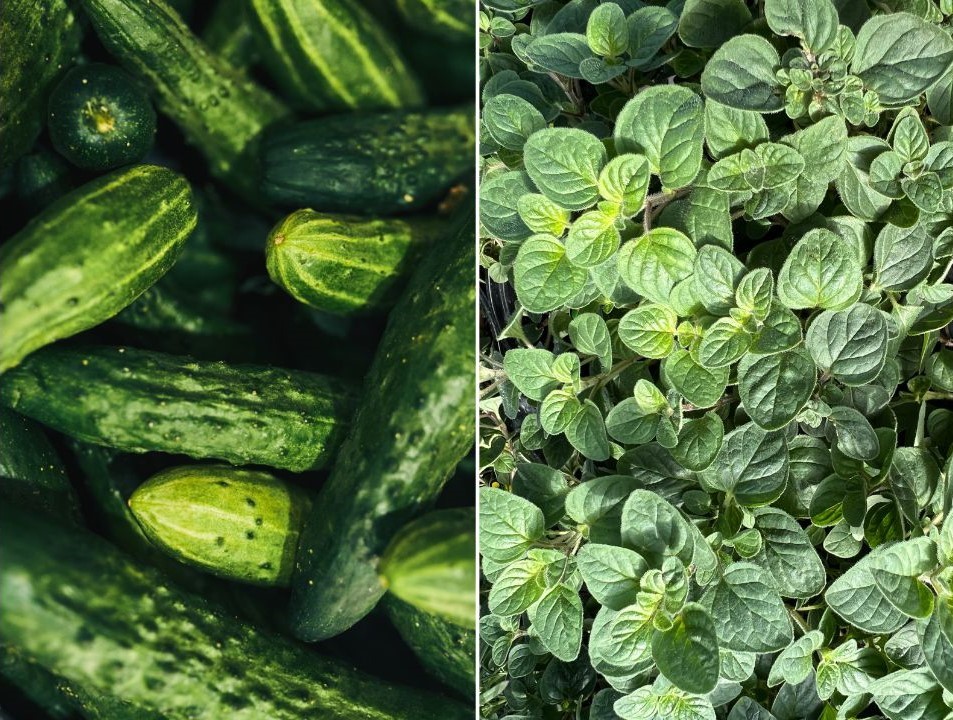
Cucumbers are quite the treat and are known to be one of the best lavender companion vegetables, you'll most certainty see your garden flourish in all its glory with finest of herbs. But what other crop can you plant next to cucumbers?
Amy tells us: 'Oregano is a great plant to pair with many vegetables but is particularly beneficial for cucumbers. Oregano's aroma repels aphids and squash bugs. Plus, if the oregano is allowed to flower, the blossoms attract beneficial insects like lacewings which help control aphids, flea beetles, and other garden pests'.
What not to plant with cucumber: Squash
Soil type for cucumber: Well-drained, loose
Sunlight for cucumber: 6-8 hours of direct sun
4. Eggplant & Swiss Chard
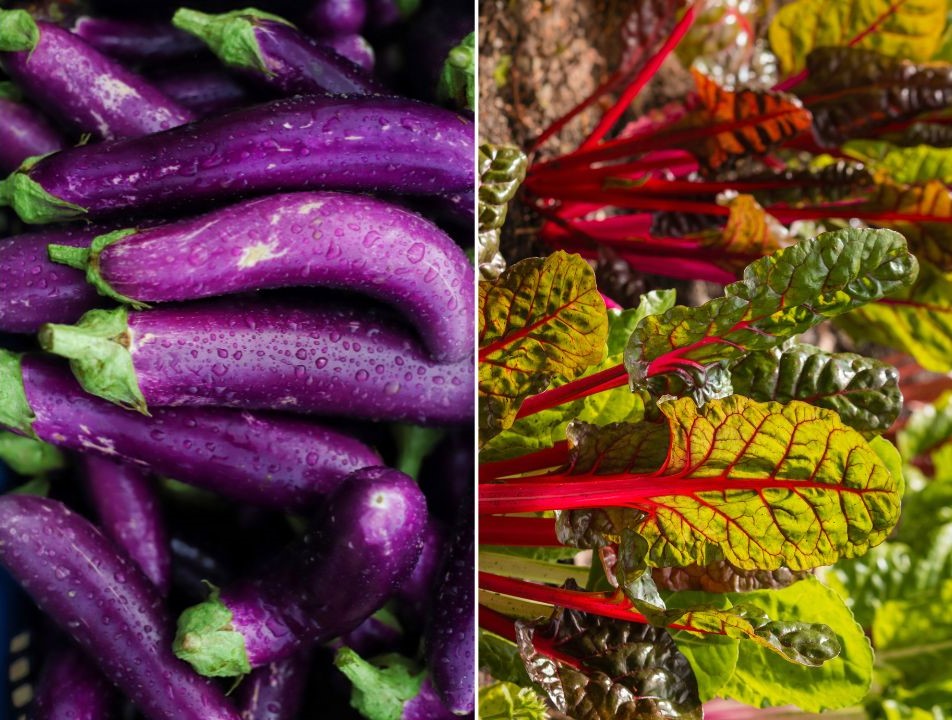
Another perfect pairing is eggplant and Swiss chard. 'Both eggplant and Swiss chard need similar growing conditions making them great plants to pair together in the garden,' Amy says. 'Swiss chard plants do not root deep so they do not compete with the deeper rooted eggplant for soil moisture and nutrients'.
The expert tells us that another added benefit is that larger eggplants provide shade to Swiss chard, particularly in the hot summer months — so you do not have to worry as your vegetable garden will be looking bright and thriving.
What not to plant with eggplant: Corn
Soil type for eggplant: Well-drained, loamy
Sunlight for eggplant: At least 6 hours of direct sun
5. Peppers & Onions
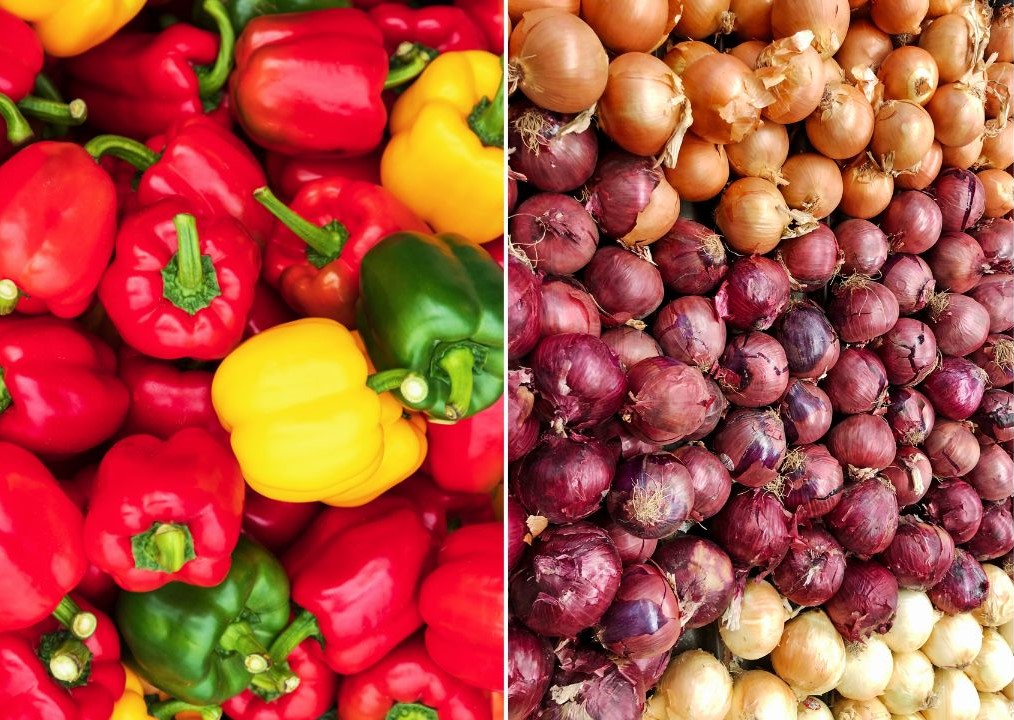
Your vegetable garden will be filled with color and aroma once you plant this perfect pairing together.
Peppers and onions are an ideal pairing and Amy tells us planting the two together will help get rid of any lingering pests. 'Aphids, particularly green peach aphids, are a very common pest of pepper plants in the garden. Members of the allium family, like onions, when interplanted with pepper plants are natural deterrents of garden pests'.
What not to plant with peppers: Brassicas
Soil type for peppers: Well-drained, loamy
Sunlight for peppers: 6-8 hours of direct sun
6. Cabbage & Chives
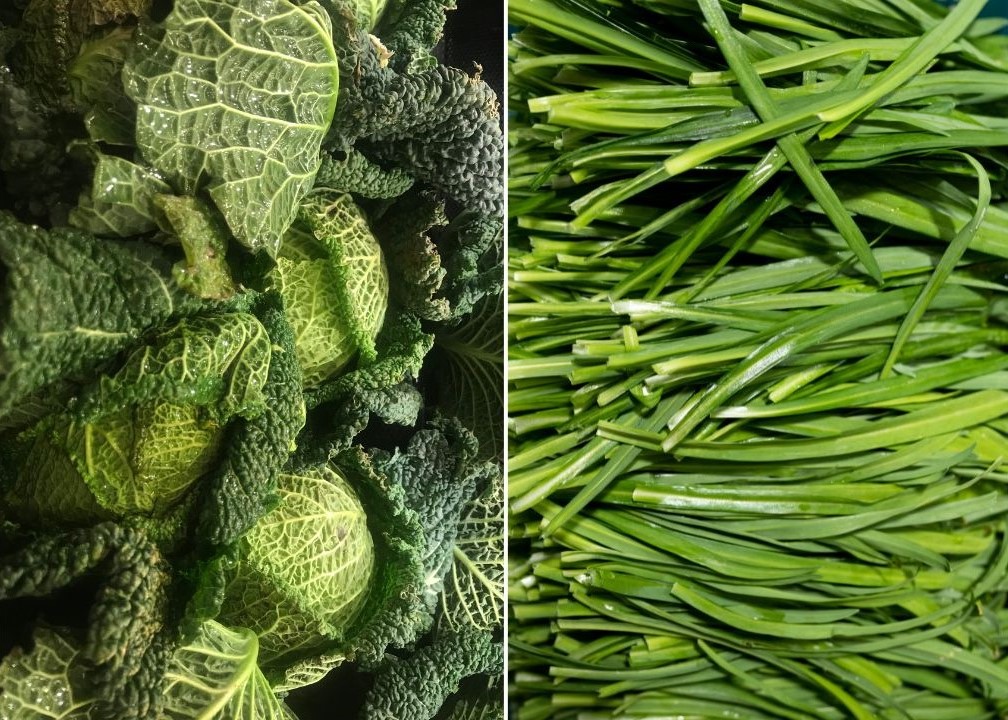
Cabbage makes for the perfect side salad, but why not mix it up a little and add a companion by its side? Chive may just the perfect 'pest control plant' you need for your crunchy cabbage to help keep pests away.
'Like the pepper and onion pairing, planting chives (another member of the allium family) near your cabbage plants can help protect your cabbage plants from aphids,' explains Amy. 'The strong aroma of chives naturally repels garden pests, like aphids and cabbage moths, that commonly attack cabbage'.
What not to plant with cabbage: Tomatoes
Soil type for cabbage: Well-drained, loamy
Sunlight for cabbage: At least 6 hours of full sun
7. Carrots & Lettuce
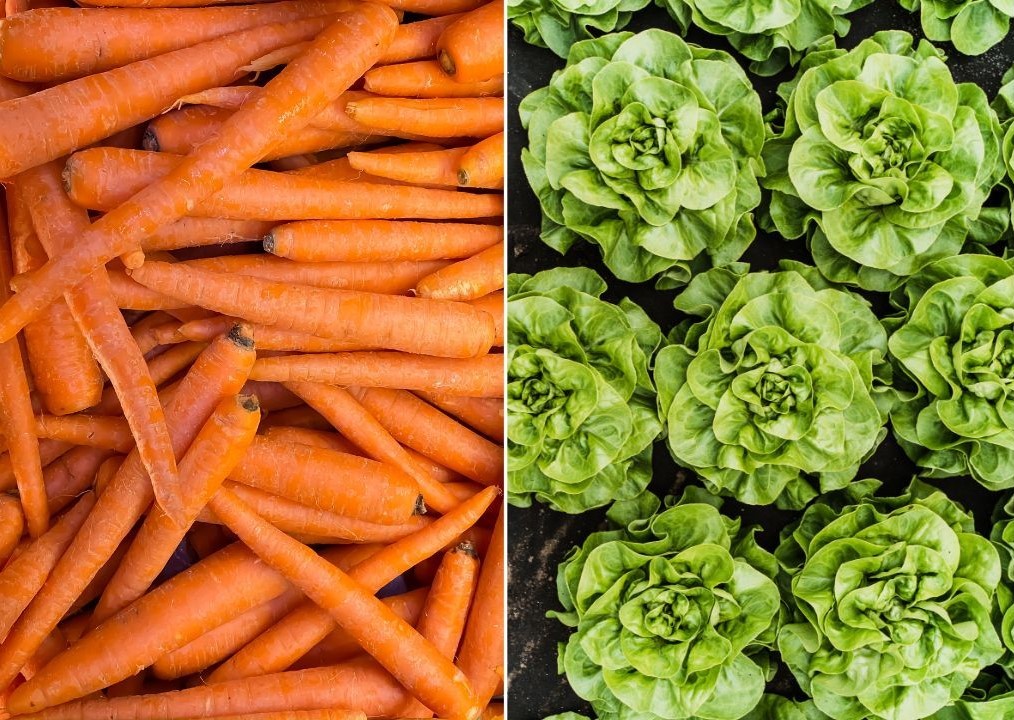
We know that companion planting carrots and onions is beneficial, but what about carrots and lettuce? Well, Amy says interplanting carrots and lettuce actually has several benefits.
'The long taproots or carrots help naturally breakup the soil as they develop making it easier for lettuce roots to grow,' Amy notes 'Carrots also attract beneficial insects, like ladybugs and lacewings, to the garden. These beneficial insects then feed on aphids which can be a major pest on lettuce plants'. As for lettuce, Amy says it helps carrots by covering the soil and prevents weeds from taking over.
What not to plant with carrots: Potatoes
Soil type for carrots: Well-drained, sandy
Sunlight for carrots: 6-8 hours of full sunlight
8. Zucchini & Radish
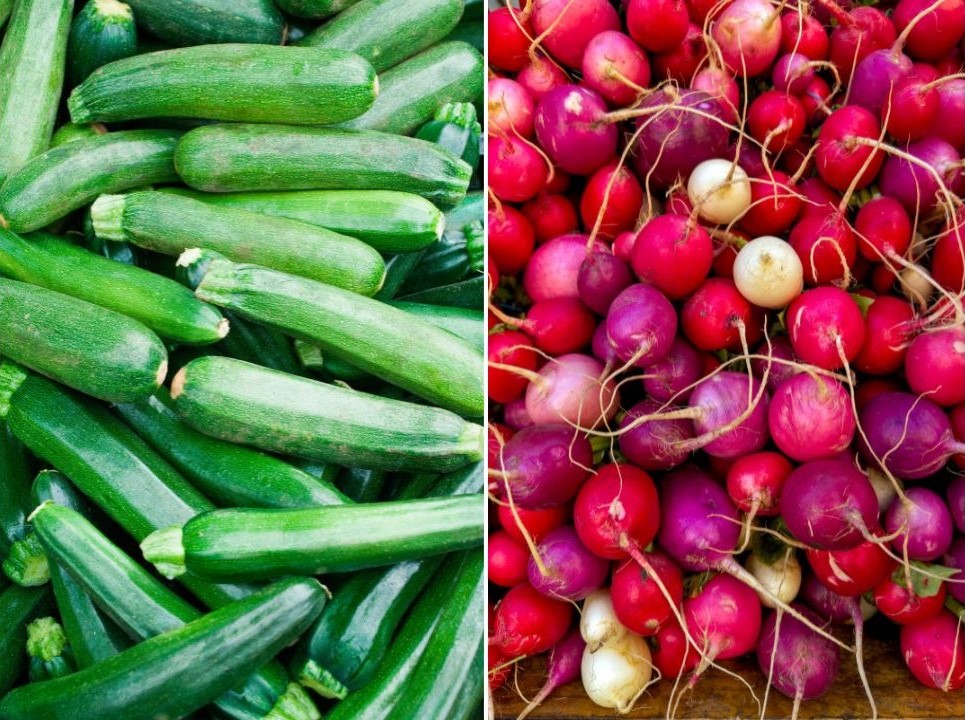
Whether you're learning how to grow zucchini in pots or you simply want to add this vegetable into you garden bed, finding the right companion for it is key if you want your crop to be in good shape.
Amy explains that while zucchini can provide shade for some radish, 'the real benefit of this pairing comes when you let a few of your radish plants go to flower. Radish flowers help repel zucchini and summer squash pests, like aphids, squash bugs, squash vine borers, and cucumber beetles'.
What not to plant with zucchini: Cucumber
Soil type for zucchini: Well-drained, loamy
Sunlight for zucchini: 6-8 hours or direct sun
9. Thyme & Tomato
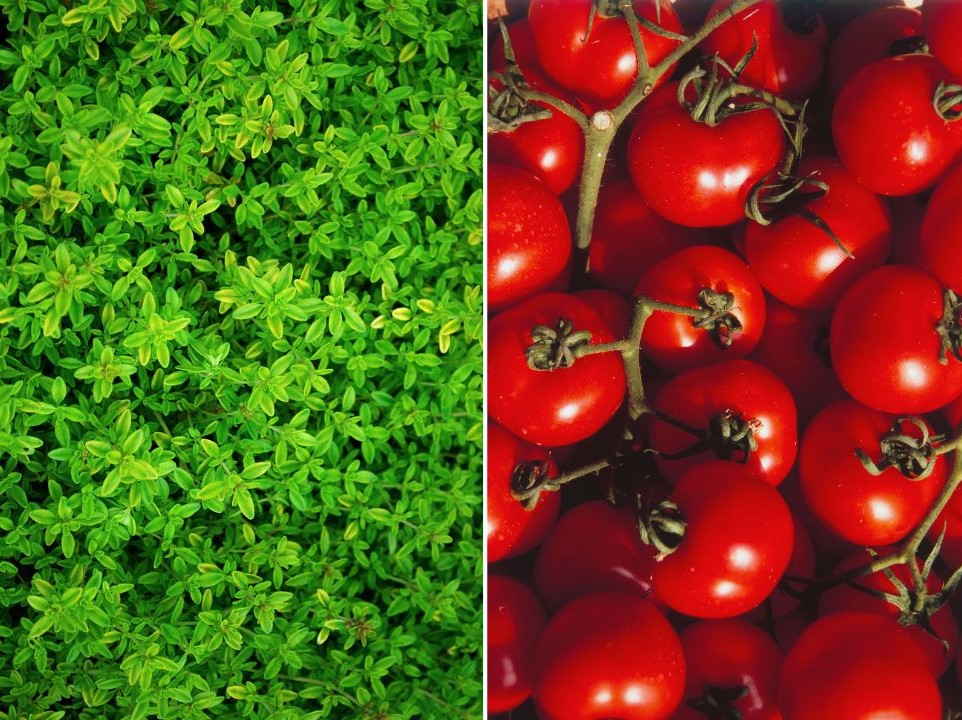
Filling the air with a hint of freshness and aroma, herb gardens are a great way to keep those pests away from your beloved vegetable patch.
'Like basil, the strongly fragrant thyme is great to interplant with tomatoes,' Amy says. 'There is research from Iowa State that shows planting thyme around tomatoes reduced egg laying by armyworm moths on tomato plants'.
The horticulturalist explains that the other benefits of planting the two together is that thyme is is low-growing, which makes it an ideal source of living mulch — therefore keeping down weeds and helping retain soil moisture.
What not to plant with thyme: Basil
Soil type for thyme: Well-drained, alkaline
Sunlight for thyme: 6-8 hours of full sun
10. Bush Beans & Dill

Bush beans are a great vegetable you can plant in July, and its ideal companion is dill.
'If allowed to go to flower, dill is great plant for attracting pollinators and beneficial insects, such as ladybugs to the garden, making them a great companion for several different vegetables in the garden,' Amy says. 'However, dill plants, along with chamomile, are good to pair with bush beans because they help repel the Mexican bean beetle which feed on bean plants'.
What not to plant with Bush beans: Onions
Soil type for bush beans: Well-drained, slightly acidic
Sunlight for bush beans: 6-8 hours of full sun
FAQS
When is the best time to plant vegetables?

If you're eager to start a vegetable garden in your backyard, then you'll need to know what it entails and when it would be the best time to plant.
'The best time to plant depends on where you live and what you plan to grow,' says Amy. 'Cool-season vegetables, like cabbage, kale, broccoli, cauliflower, and Swiss Chard, can be planted 4 weeks or more before the last spring frost depending on the plant and, in many parts of the country, again in late summer for a fall harvest'.
As for garden 'main-stays' such as tomatoes, peppers, cucumbers, and melons the expert says planting should begin once the frost has passed and the soil is slowly starting to warm up. Amy explains: 'temperatures at night should be consistently above 50 degrees before warm-season vegetables are planted in the garden. In the south, warm-season planting can be late March through early April, while in the North, mid-May through early-June is usually the best time to start planting'.
Where should I plant vegetables?
'Before starting a vegetable garden, determine how much space you have to grow vegetables,' Amy says.
The expert advises that you find a spot that gets plenty of sunlight — ideally 6 hours per day. 'Since your garden will need plenty of water throughout the season, it’s also best to locate it near an outdoor water spigot so you don’t have to drag a long hose around,' Amy notes.
Season-long care
To get the best out of your crops, Amy says you need to nourish your plants to have a happy and healthy vegetable garden.
'Most plants need 1-2 inches of water per week, more in hot weather, to thrive,' she says. 'Watering deeply and infrequently helps encourage deeper root growth which helps plants better withstand short dry periods'.
Aside from watering your crops, the expert says you will need to feed your plants using plant food formulated for vegetables and herbs. In turn, 'this will help support plant growth and a bountiful harvest'.







